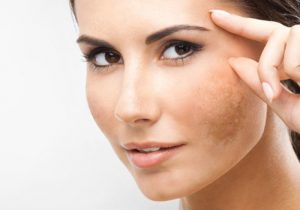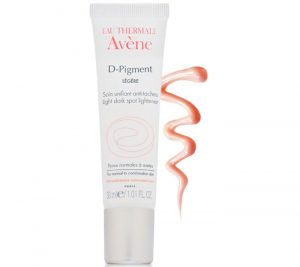Many men and women struggle with skin pigmentation and sadly, once you’re stuck with the condition it can seem near impossible to get rid of! But what exactly is pigmentation and what causes it? Melanocytes, highly specialised cells within our skin, act like microscopic umbrellas, protecting our skin from UV rays. These cells produce melanin which act as a built-in sunscreen in response to sun exposure.
But, sometimes our bodies can produce too much melanin, either because of too frequent exposure to sun or overproduction of hormones, resulting in the natural colour or pigment of our skin appearing as blotchy or darker in patches. Although Melanin is part of the skin’s barrier defence, and we need it as part of our protection against exposure to UV radiation, any pigmentation should be a warning sign from the body that the affected area of skin has been damaged by the sun.

Hyper-pigmentation
Hyper-pigmentation is the most difficult of skin conditions to treat despite the warning signs. If you’re struggling with hyper-pigmentation the first step in treatment is restricting sun exposure, along with using a good sunscreen to protect your skin. Avoid all natural and artificial UVA and UVB rays and protect the skin with a broad spectrum sunscreen, loaded with anti-oxidants to be applied daily
Some forms of hyper-pigmentation include:
Uneven Skin Tone: Also known as a form of skin discolouration, uneven skin tone appears as patches of darkened skin. This form of pigmentation can be a result of sun damage, hormonal changes or side effect of medication. Women who are on contraceptive medications or going through menopause tend to be more prone to skin discolourations.
Chloasma: Characterized by a butterfly-shaped mark, Chloasma or pregnancy mask, is a type of hyper- pigmentation that can affect the whole face or certain sections of it.
Post-Inflammatory Hyper-pigmentation: Developed through inflamed wounds, post-inflammatory hyper-pigmentation is usually tan, brown or black in colour. This condition sees an increased production of colour pigment due to an injury or inflammation to the skin.
Post-Pustular Hyper-Pigmentation: Developed from healed acne wounds. These reddish marks are caused by broken blood capillaries that have yet to heal at the site of acne lesion.

Treatment
There are many products that can be used to treat pigmentation including serums and creams. A serum like Avene D Pigment Serum can help keep your complexion clear, radiant and even-toned. This light, non-greasy serum not only reduces existing dark marks, but also prevents new dark marks from forming. Pair it with the Avene D Pigment Light cream for a real pigment busting combination. This powerful cream helps to reduce excess pigmentation brown spots, age spots, acne scars, and skin discolourations.
Looking for affordable skincare? Shop top skincare brands at the best prices online via PriceCheck now:





